We’re going to talk about a painful topic,” Callbacks”. I bet I just made the hair stand up on the back of your neck. After being a contractor for 23-plus years and speaking to contractors daily, one of the most proverbial pain points in owning a contracting business is callbacks. Callbacks can be highly frustrating Read more
Industry Blogs

We’re going to talk about a painful topic,” Callbacks”. I bet I just made the hair stand up on the back of your neck. After being a contractor for 23-plus years and speaking to contractors daily, one of the most proverbial pain points in owning a contracting business is callbacks. Callbacks can be highly frustrating, a waste of valuable time, increase technician turnover, very expensive for the company, and in some cases, the loss of a customer. Throughout this article, will talk about dissecting the cause, and I will give you four steps you can implement to reduce them.
If we break callbacks into four categories; human error, manufacturer defects, lack of training, and inadequate operations it will be much easier to identify a rationale to track them. We are all human and prone to make some mistakes and even the best manufacturers have some defective products that find their way to the wholesaler’s shelf. Training is one of the best areas to maximize your efforts as it improves technician confidence which customers will immediately notice when speaking to them. A company-wide training culture also creates validation that a tech fully understands the product “before” being asked to service or install products. Operations afford owners and managers to be transparent with their techs when an event occurs and how to prevent them from moving forward. Using technology can help mitigate callbacks by bringing consistent operations to the top of mind, customer communication, and customer specifics, when techs are in the field.

Human Error
Unless the mistake is repetitive, or constantly not following company operations, human error is a hard one to have a resolution for. Good coaching, knowing and interacting with your techs, and being transparent with technicians are some of the best procedures to help with human error. Look at the data and see if there is a pattern. Perhaps something is happening with that senior tech outside of work that is causing the errors at work. Tracking the errors by the technician and job type is a best practice to reduce them.
Manufacture Defects
Contractors attempting to get paid for a manufacturer defect is challenging. We all know most times if a product fails under the warranty period, it will replace the part but not pay for any of the labor. Even on a DOA (dead on arrival) issue, this policy stays true however, there are exceptions. The key takeaway for handling defective products is to track them. Tracking them gives you the availability to see trends and make adjustments to the product or manufacture. It’s also worth noting to differentiate between the product and the tech doing the work. Specifically, make sure it is the product and not an install or service procedure the tech is not doing correctly. Once you track how many manufacturing defects you see in the course of the year, then calculate and it should become a line item in your pricing structure as a cost of doing business. Yes, this is a normal expense item that is a cost to run a business. Large corporations operate this way as they know there will be mistakes and contracting is no different.
Operations
Constantly monitoring and adjusting your operations can play a role in reducing callbacks. There are numerous CRM’s that help automate tracking the data to make adjustments. Data like trends in a job type, what products were used, which tech did the work, and the amount of time the tech was on the call. Automation also helps to mitigate confusion between the customer, dispatcher, and the original call. Defining and adjusting operations that affect callback mitigation is key to reducing them company-wide. Be completely transparent with company procedures between the technicians and their manager as to what happens when there is a callback.
Training
Teachable and trainable moments on an individual and company-wide basis can be produced through callbacks. Decide if there is one tech or several techs on a given call type having callbacks. If it’s several techs on the same callback, bring them together and reinforce the training on the hows and whys and just as importantly track the outputs of the training efforts. Make the adjustments from the group to individualized training accordingly if the callbacks persist with one technician. If the callback is from an individual and it’s identified as a training issue, assign or implement the training and as an interim, use your CRM to prevent that tech from doing the call type until it is confirmed the tech thoroughly understands the original mistakes made. Providing, implementing, and tracking training for your tech is one guaranteed way to mitigate technical and operational mistakes that lead to callbacks. In the fast-paced business environment, numerous contractors don’t value training or implementation of activity at the level it should be. There are other, less expensive options available to contractors to use a training tool instead of traditional brick-and-mortar training models. Digital and virtual reality software is available at one-third the price per technician. This training can be done asynchronously and not affect workflows and scheduling. All of the metrics are available to track the progress of a technician’s performance against the training activity assigned to a technician and help with callback mitigation.
There you have it! Implement and or refine these four tactics in your business and you will start to reduce some of your callbacks. It should be noted that one of the impacts of a callback not mentioned in this writing is the financial impact and opportunity costs of a callback on the company’s bottom line. Look for a breakdown and explanation of that in future articles. Happy Contracting!
 Guest Blogger: Ken Midgett, has been in the plumbing and heating industry for over four decades. He has worked in every facet of the plumbing and heating industry. He has owned two successful PHCC businesses, is a licensed Master Plumber, a two-time national award-winning educator for plumbing and heating CTE classrooms, with a 100 percent placement into the industry for all eligible seniors from his program. Ken was noted throughout the CTE industry for the inclusion of non-traditional workers in his classroom, including young women. He has placed several of those young women in the workforce. Ken is passionate about the skilled trades and he continues to stay active in PHCCNA and PHCCPA. Ken is the current president of his local PHCCLV association. This role has allowed him to continue mentoring and coaching young apprentices in the field. He is currently employed at Interplay Learning as the Plumbing Market Director. You can follow Ken at www.linkedin.com/in/kenmidgett.
Guest Blogger: Ken Midgett, has been in the plumbing and heating industry for over four decades. He has worked in every facet of the plumbing and heating industry. He has owned two successful PHCC businesses, is a licensed Master Plumber, a two-time national award-winning educator for plumbing and heating CTE classrooms, with a 100 percent placement into the industry for all eligible seniors from his program. Ken was noted throughout the CTE industry for the inclusion of non-traditional workers in his classroom, including young women. He has placed several of those young women in the workforce. Ken is passionate about the skilled trades and he continues to stay active in PHCCNA and PHCCPA. Ken is the current president of his local PHCCLV association. This role has allowed him to continue mentoring and coaching young apprentices in the field. He is currently employed at Interplay Learning as the Plumbing Market Director. You can follow Ken at www.linkedin.com/in/kenmidgett.
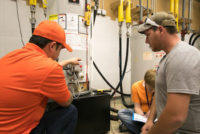
In the realm of home maintenance and repair, few professionals are as indispensable as plumbers. These skilled individuals are the unsung heroes who keep our homes running smoothly by maintaining, repairing, and installing vital plumbing systems. A great plumber possesses a unique blend of technical expertise, problem-solving skills, and customer service. In this blog post Read more
In the realm of home maintenance and repair, few professionals are as indispensable as plumbers. These skilled individuals are the unsung heroes who keep our homes running smoothly by maintaining, repairing, and installing vital plumbing systems. A great plumber possesses a unique blend of technical expertise, problem-solving skills, and customer service. In this blog post, you’ll explore five qualities that set exceptional plumbers apart, ensuring that your plumbing needs are met efficiently and effectively.
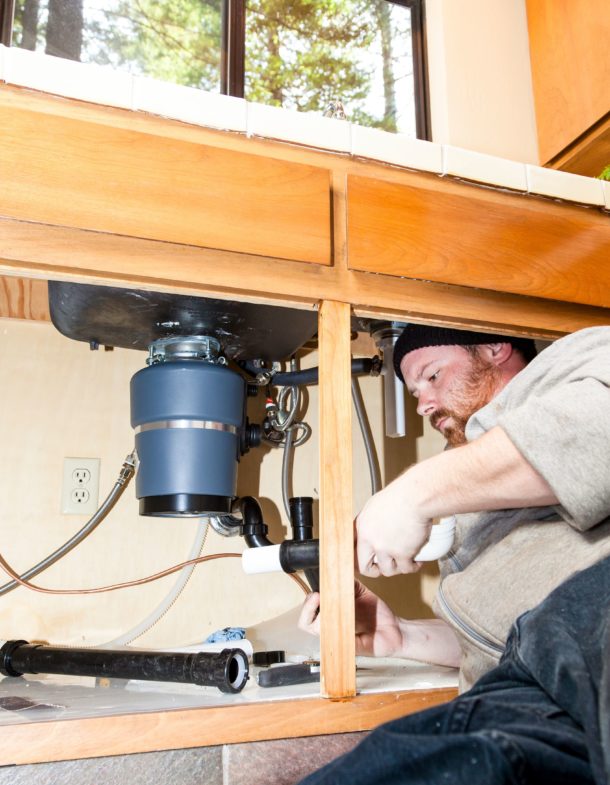
1. Technical Proficiency
Central to the skill repertoire of an exceptional plumber is a profound technical prowess. Plumbers necessitate an adept comprehension of plumbing systems, pipe compositions, the art of fixture installations, and the nuances of fluid dynamics. Whether rectifying a dripping faucet, dislodging a clogged drain, or rectifying a ruptured pipe, a proficient plumber adeptly navigates the fundamental mechanisms and wields the necessary tools for prompt resolution.
If you live in or around Long Beach, for example, finding credible plumbers at Long Beach will be your top priority. Plumbers in general should exhibit familiarity with regional plumbing codes and regulations, thereby ensuring both effectiveness and adherence to local standards. The integration of such technical proficiency guarantees not only the resolution of immediate issues but also the fortification of your home’s plumbing foundation for the long term.
2. Problem-Solving Aptitude
Plumbing challenges frequently manifest as intricate puzzles demanding swift and astute resolutions. A proficient plumber demonstrates a knack for precise problem diagnosis, methodically evaluating potential remedies, and executing the optimal strategy. Be it an enigmatic watermark on the ceiling or an abrupt water pressure dip, a skilled plumber adeptly evaluates the scenario and proffers viable solutions.
This adeptness at troubleshooting guarantees expedient resolution, mitigating both disruptions and potential structural harm to your residence. By swiftly deciphering issues and employing suitable measures, these experts ensure your peace of mind and the safeguarding of your home’s integrity.
3. Adaptability and Continuous Learning
The plumbing landscape remains in a perpetual state of evolution, marked by the frequent emergence of novel technologies and methodologies. A distinguished plumber comprehends the significance of remaining well-versed in these progressive developments to deliver unparalleled service. Whether delving into the intricacies of water-conserving fixtures or attaining mastery in sophisticated pipe restoration techniques, an exceptional plumber places paramount importance on perpetual education.
This commitment not only enriches the plumber’s skill set but also guarantees that clients in need of plumbing solutions, particularly in dynamic locales such as Long Beach, benefit from the utmost in effective and state-of-the-art remedies. Embracing this ethos of learning assures that the plumber stays ahead of the curve, fostering innovation and customer satisfaction.
4. Effective Communication
Undoubtedly, clear and effective communication stands as an underestimated yet pivotal attribute of an excellent plumber. The scope spans from elucidating the intricacies of an issue and its possible remedies to deliberating over cost approximations and project schedules. A proficient plumber adeptly simplifies intricate concepts to a homeowner-friendly level.
Moreover, a plumber’s attentive listening to the concerns of clients contributes to fostering trust and ensures that the precise requirements of the homeowner are met. With a plethora of options for plumbers in Long Beach, prioritizing effective communicators streamlines the process, adding an extra layer of transparency and confidence to the homeowner-plumber collaboration.
5. Exceptional Customer Service
Delivering exceptional customer service is a defining trait of a remarkable plumber. Given the potential stress that plumbing issues can induce, homeowners genuinely value plumbers who engage in their tasks with a welcoming and courteous attitude. A proficient plumber not only clarifies the tasks at hand but also imparts insights into preventive maintenance while ensuring the workspace is left orderly and neat.
By placing a premium on customer contentment, outstanding plumbers cultivate enduring associations and establish a reputation for dependability and professionalism, especially within regions such as Long Beach. This commitment to excellence not only resolves immediate plumbing concerns but also instills confidence for any future needs homeowners might encounter.
Conclusion
In the world of home maintenance, finding a skilled and reliable plumber is invaluable. Their expertise ensures that the plumbing systems, which are the lifelines of our homes, remain in optimal condition. A great plumber possesses a combination of technical prowess, problem-solving abilities, continuous learning, effective communication, and exceptional customer service. Whether you’re facing a minor plumbing concern or a major emergency, these qualities will guide you in identifying the plumber Long Beach homeowners can trust to meet their plumbing needs effectively and efficiently.

In today’s fast-paced world, leveraging the power of online resources is essential for the success of any plumbing contractor. Ferguson.com is that resource. As a busy service contractor, time is of the essence. When I plan out my busy week schedule, resource efficiencies are at a premium, and that includes stocking my truck adequately. Moreover Read more
In today’s fast-paced world, leveraging the power of online resources is essential for the success of any plumbing contractor. Ferguson.com is that resource.
As a busy service contractor, time is of the essence. When I plan out my busy week schedule, resource efficiencies are at a premium, and that includes stocking my truck adequately. Moreover, running a successful plumbing business requires access to quality products, reliable suppliers, and expert advice. In today’s digital age, having a robust online platform can significantly streamline your operations and contribute to your business’s growth.
In today’s post-COVID world, especially dealing with disruptive supply chain issues, it almost goes without saying; you can never have too much inventory on the truck or back at the shop. That’s why I rely on Ferguson.com, a comprehensive website that has plumbing contractor-specific resources available, all of which are literally just a click away. And that click provides real-time stock and pricing of more than 200,000 HVAC and plumbing products; I can see what’s in stock and my contract pricing.

My plumbing business relies on my wholesaler to carry a vast range of top-quality products from leading brands, and I trust Ferguson to provide those trusted, reliable, and durable solutions. Whether I’m looking for pipes, fittings, valves, fixtures, boiler parts or specialty items, I look to Ferguson.com.
Some really helpful features include “My Lists.” I am able to customize the order process with just a few clicks, instead of individually searching for the products I purchase regularly and organizing lists of the products I want. This ultimately has saved me time and has helped to streamline my ordering process. Ferguson.com even gives me the ability to share those lists I’ve created and keeps products I purchase under the “Bought Often” tab, which is automatically updated monthly.
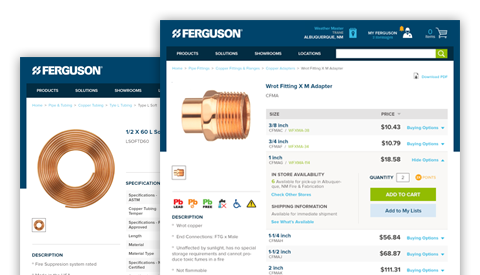
The Quick Tools feature is a shortcut that makes it easy for trade professionals to quickly access other popular site features. It gives me the quick ability to order, reorder, find an order, or turn existing quotes into orders, all in one place. In some cases, I can even order online and have the order ready in an hour with Pro Pick-Up 1 Hour (at locations where Pro Pick-Up 1 Hour is available).
While traditional brick-and-mortar purchasing is still a viable wholesale solution, with Ferguson.com, I can gain access to a seamless and convenient online ordering system. This allows me to browse through products, check availability, compare prices, and place orders anytime, from anywhere. By simplifying the procurement process, Ferguson.com saves valuable time and effort, enabling me to focus on serving my customers better.
 Furthermore, as a plumbing contractor, staying up to date with the latest industry trends and techniques is crucial. Ferguson.com offers a wealth of resources and expert advice to help me stay ahead of the curve. From informative articles and how-to guides to videos and product demonstrations, the website serves as a knowledge hub for plumbing professionals. Leveraging this wealth of information can enhance one’s expertise, expand a skill set, and ultimately elevate one’s business.
Furthermore, as a plumbing contractor, staying up to date with the latest industry trends and techniques is crucial. Ferguson.com offers a wealth of resources and expert advice to help me stay ahead of the curve. From informative articles and how-to guides to videos and product demonstrations, the website serves as a knowledge hub for plumbing professionals. Leveraging this wealth of information can enhance one’s expertise, expand a skill set, and ultimately elevate one’s business.
Sometimes I need to know what was on an order or the last time I bought a certain product. I’m able to find all of that online and end any confusion about my orders. If I need to see the status of an order, I can see it on my Ferguson Dashboard or Orders, and even get the proof of delivery. (Proof of delivery may not be available depending on how the order shipped or if it was signed for.)
Forward Thinking
Ferguson understands the importance of competitive pricing for plumbing contractors. By signing up for a Ferguson.com account, one can unlock access to exclusive contractor pricing on a wide range of products. This ensures that I can offer my customers competitive rates while maintaining healthy profit margins for my business. The savings one can achieve through Ferguson.com can significantly impact your bottom line and give you a competitive edge in the market.
It’s pretty simple, really. Creating an account on Ferguson.com provides plumbing contractors with a range of powerful tools to manage their business efficiently. By logging in, one can track his or her order history, access invoices, and manage one’s account settings, all in one centralized location. This streamlined account management feature eliminates the need for tedious paperwork and enables one to stay organized and in control.
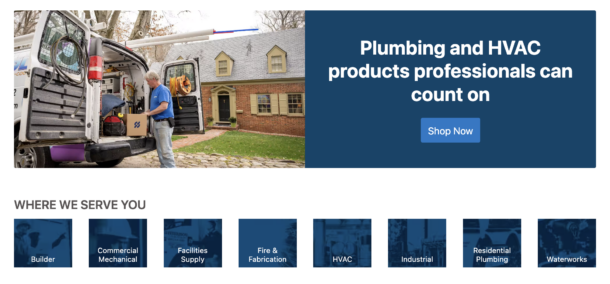
What’s also cool about the site is that I can enroll for the free PRO Plus™ program. After I enrolled in this program, I now earn one point for every dollar I spent online. I can then redeem those points for cool prizes and earn Bonus Points faster by purchasing featured products. PRO Plus™ customers are also eligible for discounts with select businesses.
Ferguson.com boasts an extensive inventory of plumbing products, tools, and supplies, as well as expert advice and efficient account management, making it a one-stop solution for all of my business needs. By utilizing the features and capabilities of Ferguson.com, I can streamline my operations, relieve operational stress, and propel my business toward greater success. Sign up today and unlock a world of opportunities for your plumbing contracting business with Ferguson.com.
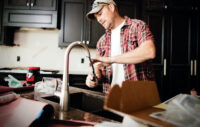
By Bryan Cordill Buildings—including homes—are a significant source of greenhouse gas emissions. In fact, homes account for nearly 40 percent of carbon pollution in the United States, according to the U.S. Green Building Council. Builders and contractors have several options available to them to lower the carbon footprint of the homes they build. Not only Read more
By Bryan Cordill
Buildings—including homes—are a significant source of greenhouse gas emissions. In fact, homes account for nearly 40 percent of carbon pollution in the United States, according to the U.S. Green Building Council. Builders and contractors have several options available to them to lower the carbon footprint of the homes they build. Not only in the embodied carbon of the building, but also in the operating emissions of the home over its lifetime.
The Propane Education & Research Council (PERC) understands the need and desire for builders to do their part in the homes they build. Its Propane Construction Incentive Program encourages more builders and remodelers to incorporate clean, reliable propane into their projects. The program awards qualifying and selected construction professionals a monetary incentive for building or remodeling homes using propane appliances in exchange for sharing emissions data and insights regarding their propane use at each home.
Todd Fitzgerald is a builder and owner of Father & Son Construction in New Hampshire. He’s been building homes for 30 years and has participated in the Propane Construction Incentive Program since 2018.
“Building and living in a sustainable home is growing more and more important to my customers, so that makes it part of my job, Fitzgerald said. “When we’re out building and we can use propane, especially through this program, we do it.”
Builders across the country are participating in the Incentive Program and seeing the environmental benefits of using propane in the homes they build. In 2022, the program resulted in the elimination of more than 18 million pounds of carbon dioxide equivalent (CO2e) per year in more than 1,000 homes across 19 states compared to building the same homes all electric.
Eliminating over 18 million pounds of CO2e is a huge win for the planet. It’s equivalent to eliminating greenhouse gas emissions annually from:
- 1,839 gasoline-powered passenger vehicles driven for one year.
- 1,038,249,446 smartphones charged.
- 1,075 homes’ energy use for one year.
Many people mistakenly believe an all-electric home is the only way to reduce or eliminate carbon emissions. But this data shows that pure electrification is not the answer, instead builders need to consider a strong energy mix in the homes they build, and that energy mix should include propane.
It will take decades and cost trillions of dollars to expand the country’s electric grid to service an all-electric housing stock. Not to mention, much of the U.S. grid electricity is produced by burning natural gas or coal. Propane is an immediate solution to accelerate decarbonization, as the findings from last year’s program show.
The Propane Construction Incentive Program offers a baseline incentive of up to $1,000 to builders or remodelers who upgrade to propane appliances in a new build or a remodel. Applicants can also earn an extra $500 on top of the baseline incentive based on their geographic location. Visit propane.com for more information.
The 2022 program awarded $1 million in funding to construction professionals who provided data from the Energy Planning and Analysis Tool comparing the emissions of the propane appliances to their electric alternatives. Installations included propane furnaces, water heaters, fireplaces, cooktops, ovens, clothes dryers, outdoor grills, and standby generators.
“Participating in this program means there is extra money coming in to offset costs, which is really good,” Fitzgerald said. “Plus, it’s easy to sign up. I choose propane over other energy sources because it’s efficient and clean. It’s good for the environment, and that’s important to me and my customers.”
Builders and remodelers who participate in the Propane Construction Incentive Program and install propane appliances in their customers’ homes are not only creating a competitive advantage for themselves, but they are also helping decrease greenhouse gas emissions while delivering the comfort and efficiency their customers desire.
Learn more about the qualifications, including bonus regional and remodeling incentives, and apply at Propane.com/ConstructionIncentive.
 Bryan Cordill is the director of residential business development at the Propane Education & Research Council. He can be reached at bryan.cordill@propane.com.
Bryan Cordill is the director of residential business development at the Propane Education & Research Council. He can be reached at bryan.cordill@propane.com.
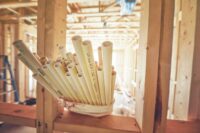
By Jonathan Simon Most homeowners don’t think about the plumbing materials in their homes until a problem occurs. Yet, plumbing materials play a significant role in their day-to-day quality of life, especially when the system doesn’t deliver on their expectations. Some plumbing systems can contribute to issues like poor water pressure and water quality. Then Read more
By Jonathan Simon
Most homeowners don’t think about the plumbing materials in their homes until a problem occurs. Yet, plumbing materials play a significant role in their day-to-day quality of life, especially when the system doesn’t deliver on their expectations.
Some plumbing systems can contribute to issues like poor water pressure and water quality. Then, of course, there are the reliability problems that can arise when the plumbing system proves incompatible with local water conditions, leading to failures and water damage that can turn a homeowner’s life upside down.
So, while homeowners don’t spend much time thinking about plumbing materials, plumbers should. Here are four ways that you can protect your customers thanks to the performance of CPVC.
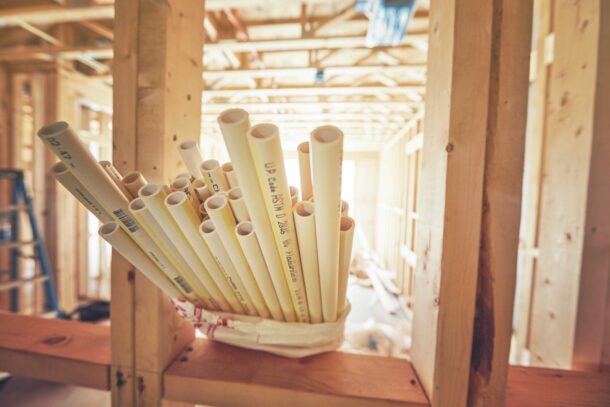
Water Pressure
Low water pressure can be frustrating for homeowners every time they shower, and the design of the plumbing system could be a contributing factor.
Plumbing systems using insert fittings where the fitting goes into the pipe will reduce the system’s diameter at the fitting, restricting flow and creating a much larger pressure loss than occurs with systems where the pipe is inserted into the fitting, such as CPVC and copper. Even expansion fittings, which have the largest internal diameter of the insert fittings, can cause up to 7x more pressure loss in the system compared to a CPVC or copper fitting.
Insert fittings can also create turbulent zones in the pipe as water jets out of the restriction created by the fitting. These higher-velocity zones may require that the design velocity of the system be reduced to remain within manufacturer specifications.
Plumbers can compensate for the issues created by insert fittings by upsizing piping, but that adds significant cost to projects. Using larger pipe to slow down the water and reduce pressure drop can also pose challenges in areas that need to comply with water and energy efficiency standards. By minimizing pressure drop across the system, CPVC helps preserve water pressure at fixtures.
Water Quality
No plumbing system can improve water quality, but the choice of materials can minimize the risk of various sources of contamination.
One of those risks is biofilm growth. Biofilm that forms inside residential plumbing systems can contain bacteria such as E. coli, coliforms and legionella. The susceptibility of a particular material to biofilm is called its biofilm formation potential and varies across materials. Independent research has found that CPVC has a lower biofilm formation potential than other plastic plumbing systems and is consistently among the lowest of plumbing systems tested.
Permeation and leaching also present risks to residential water systems. Materials vulnerable to permeation can allow dangerous chemicals that come in contact with the outside of the pipe to enter the water supply. The U.S. EPA, in their study on Permeation and Leaching, found that vinyls such as CPVC are virtually impermeable at low levels of exposure and that polyolefin plastic plumbing materials accounted for more than three-quarters of the documented permeation incidents in the United States.
NSF 61 is the industry standard for protecting against unsafe leaching of chemicals from plumbing materials into the water supply. FlowGuard Gold CPVC is certified to NSF 61 under all water conditions. Copper and some PEX brands have limitations on their NSF 61 listings.
By reducing the risks from biofilm formation, permeation and leaching, plumbers play an important and underappreciated role in protecting the health of their customers. And while homeowners may never fully appreciate that role, they could notice the difference in water quality when materials other than CPVC are used. According to research from Virginia Tech, CPVC has the lowest impact on drinking water taste and odor of any residential plumbing material.
Reliability
In addition to good pressure and water quality, homeowners want a plumbing system they don’t have to worry about. If there’s one thing more frustrating than a water leak, it’s having a second leak soon after the damage from the first has been repaired. That was the experience of the Jackson family in Battle Ground, Washington. They had multiple plumbing system failures, one after the other, until an expert finally diagnosed the root cause of the problem as incompatibility between the plumbing material chosen for their ten-year-old home and local water conditions. When the home was repiped with CPVC, the problems disappeared.
CPVC is the only residential plumbing material that is naturally immune to chlorinated drinking water. As municipalities strive to maintain water safety through treatment methods that produce higher oxidative reduction potential in the water they supply, this is more important than ever. CPVC can perform reliably in water conditions and at temperatures, pressures and velocities that could lead to degradation and early failure in other plastic or metal plumbing systems.
Sustainability
For homeowners that prioritize the sustainability of building materials, CPVC is a very attractive choice. Based on comparisons using the National Institute of Standards (NIST) BEES software, FlowGuard Gold CPVC requires less energy to manufacture, has lower embodied energy and results in fewer emissions over its service life than PEX and copper. CPVC is also recyclable through proper centers.
In addition, FlowGuard Gold CPVC is the only residential plumbing system certified by Home Innovation Labs National Green Building Standard (NGBS) and has a lifecycle assessment to enable the material to contribute to LEED certification.
Making the Right Choice
If you’re looking to give your customers the water quality, pressure, reliability and sustainability they are looking for, CPVC is the right choice. And CPVC doesn’t just deliver benefits to homeowners. Plumbers experience lower material costs, faster installation and excellent support from leading manufacturers. To learn more, visit flowguardgold.com/plumber-resources.
Jonathan Simon is the North American residential plumbing manager for Lubrizol Advanced Materials. Half of the world’s consumers use at least one product containing a Lubrizol ingredient. Advanced materials products create and/or improve the performance of our customers’ products and enable unique performance attributes. For 60 years, FlowGuard Gold Pipe and Fittings have provided reliable hot and cold water plumbing systems to residential and commercial buildings.
